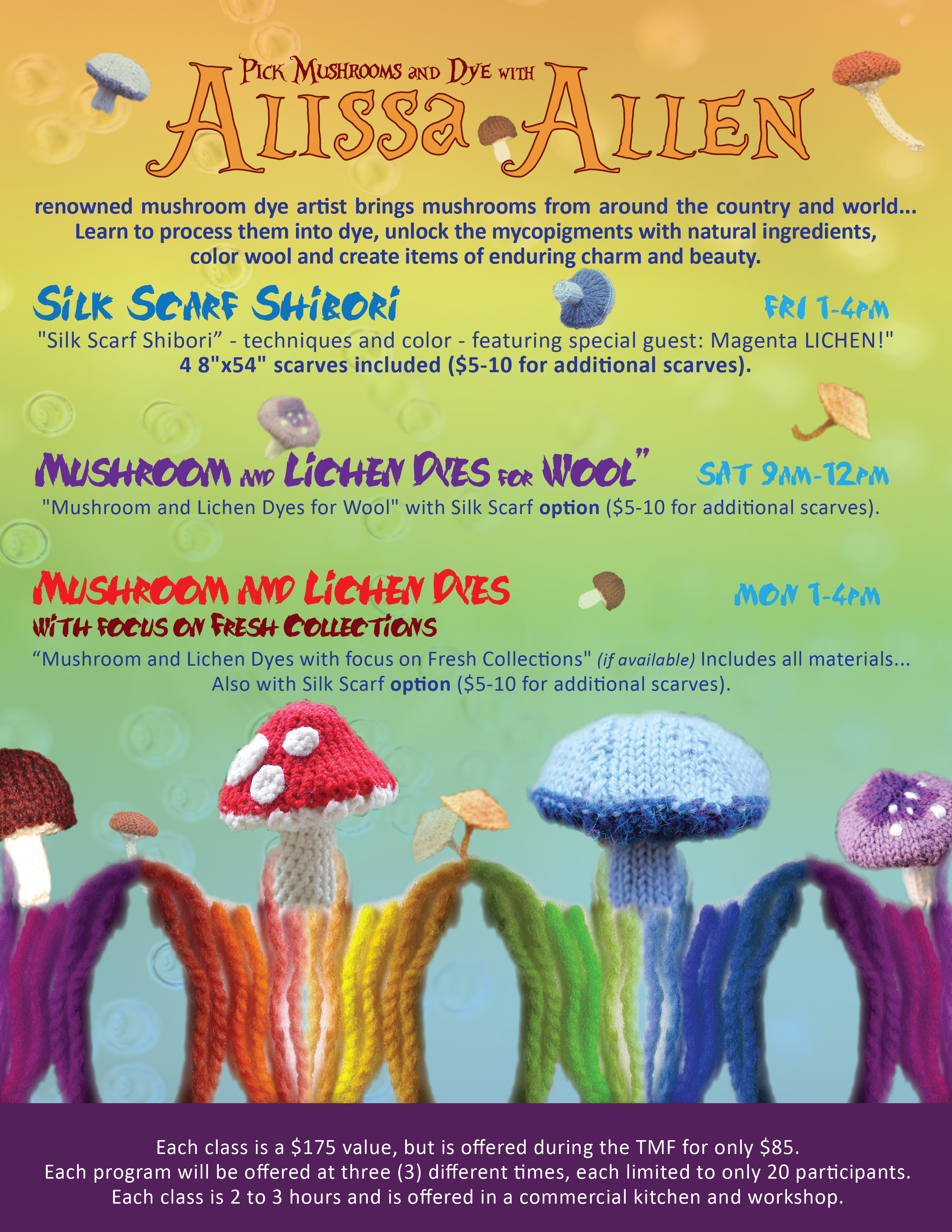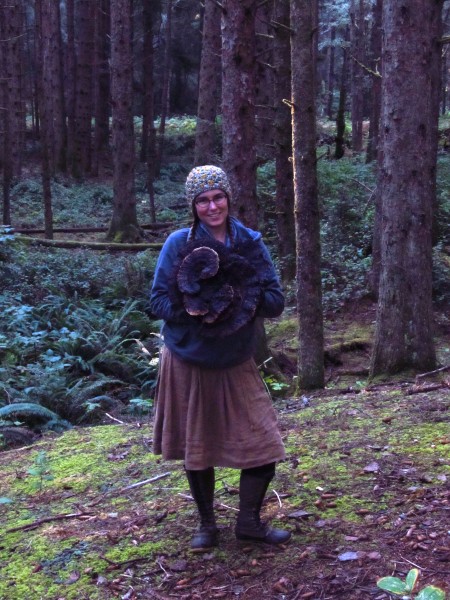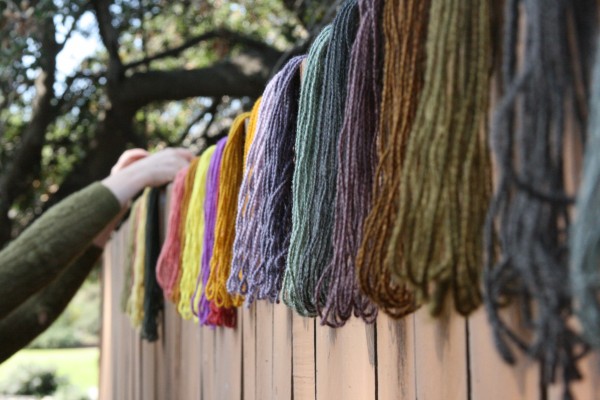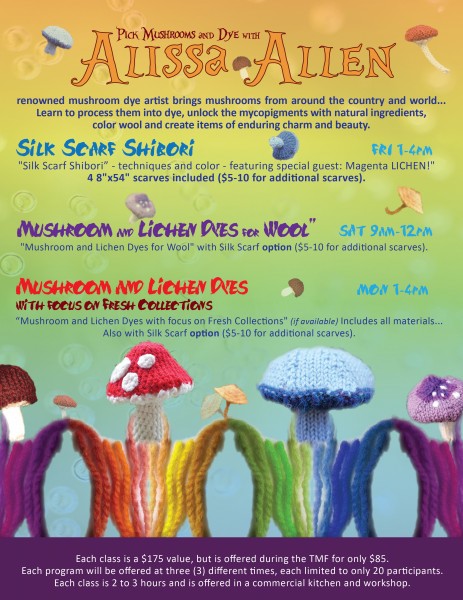
04 Aug Pick Mushrooms – and Dye: MycoPigments Mushroom Dyer Alissa Allen
Buy tickets to workshop learn to create a palette of mycopigments with mushroom dyer Alissa Allen here.
The 33rd annual Telluride Mushroom Festival is delighted to offer three workshops with mycophile and artist, Alissa Allen, whose work combines her “passion” for foraging and mushroom identification with her “obsession” for developing mycopigments for dyeing wool and silk. Participants will be introduced to techniques for using mushrooms and lichen to create natural works of beauty.
“Pick Mushrooms and Dye with Alissa Allen” workshops will focus on demonstrating simple steps for extracting the color rich pigments found in wild mushrooms and using them to dye fibers and fabrics. Participants will learn about the best fungi to use to for dyeing, as well get tips on how to identify habitats and features to look for when collecting specimens for creating new dyes. Participants will receive an informative handout that details the entire dye process, as well as a sample card, including a rainbow of mushroom- and lichen-dyed yarn and the recipes used to achieve the colors.
The workshops will be offered at three different times during the Festival. Each workshop will be limited to 20 participants and will be conducted in a commercial kitchen with ample room for dyeing.
Exploring Mushroom for Dyes Workshops:
Friday, August 15, 1:00 pm – 4:00 pm: Silk Scarf Shibori with Magenta Lichen
Saturday, August 16, 9:00 am – 12:00 pm: Mushroom and Lichen Dyes for Wool
Monday, August 18, 1:00 pm – 4:00 pm: Mushroom and Lichen Dyes towards “Fresh Collections”
Location: Elks’ Lodge, located in the Swede-Finn Hall at 472 W. Pacific Ave
About Alissa Allen
Alissa Allen has spent her life exploring the natural world, with the past 15 years focused on her passions for mycology and creating pigments from mushrooms and lichens. She attributes her early interest in nature to her parents, noting that her father was a horticulturalist and her mother was an artist, who was also “obsessed with edible plants.” Her family moved to Washington when she was four years old. The family’s home was in an area surrounded by old-growth coniferous forests and was loaded with fungi. It was here that her interest in nature and mycology really blossomed.
Alissa’s interest in mycology deepened in 1998, when she joined the Puget Sound Mycological Society, where a colleague introduced her to the process for dyeing wool with mushrooms and she was hooked. Over the following six years, Alissa honed her skills in foraging and dyeing, with special encouragement from friends and teachers, Sara Clack and Patricia Benson. She began giving workshops of her own on natural dyeing techniques in 2004.
In recent years, Alissa has dedicated an increasing amount of her time to researching mushrooms and lichens in various habitats throughout the United States, experimenting with new dyeing techniques and creating a network of knowledgeable people to share information about local natural dyeing processes across the country. She notes that even among traditional artists working with natural fibers and yarns, “dyeing with mushrooms goes beyond many people’s comfort zones,” because it requires knowledge about foraging, artistic skill in working with fiber, and the “willingness to cook stinky mushrooms.”
The products of this sometimes “stinky” work, however, are stunningly beautiful fibers—from soft earth tones to brilliant violets, indigoes, and magenta. Alissa’s favorite colors, individually named like a myco-kaleidoscope of colors, include Cortinarius red, Dermocybe orange, Phaeolus and Letharia yellow, Hydnellum blue, Phaeolus and Tapinella green, Boletopsis and Phellodon indigo, Omphalotus and Hapilopilus violet and Umbilicaria magenta.
Based on her study of regional traditions of natural dyeing, Alissa suggests that there are two “camps” of dyeing: a West Coast tradition and an East Coast tradition. The West Coast method, based on the seminal work of the multi-faceted artist, Miriam C. Rice, focuses on creating dyes by simmering fresh mushrooms in boiling vats of water This method of dyeing, which Alissa refers to as “folk dyeing,” produces vibrant and strong colors, but it is often difficult to precisely replicate. She identifies the East Coast tradition as one that draws on techniques derived from Scandinavia in which dried mushrooms are carefully measured and prepared with distilled water. The precise measuring and preparation of the dye allows for more accurate replication of colors.
Primary goals of Alissa’s current work include expanding her knowledge of fungi and lichen species that can be best adapted for dyeing, developing new and better techniques for extracting the colors and creating vibrant permanent colors, and nurturing a network of experts open to sharing information about successful dyeing techniques and sharing mushrooms for artistic work. As a first step in meeting this final goal, Alissa has created a Facebook forum “The Mushroom Dyer’s Trading Post,” to share information about dyeing methods and “facilitate the exchange of abundant common dye fungi.”

Alissa Allen, mushroom dyemeister. She is leading a course on dying with mycopigments at the 33rd annual Telluride Mushroom Festival
Alissa is grateful for the many mentors that she has had along the way in her study of fungi, and as an artist. They have inspired her “not only for their artwork, but by their drive to create for themselves a meaningful existence.” As a mentor herself, Alissa plans to continue offering workshops at home and throughout the country. Her current schedule of travel to conduct forays with her partner, award-winning photographer and mushroom identifier, Noah Siegel, leaves her little time for studio work, though she does create works in wool and silk when she has time.
Like any true mentor, Alissa’s goals are to share not only her talent, but to instill participants in her workshops with the delight she takes in creating through nature. She engages deeply in the dual aspects of her work with fungi and with fiber art. Alissa notes,
“I love sharing my passion for fungi with others, and I especially love seeing my students take a closer look at the wild natural world around them. Foraging, studying, and observing nature is what I strive to share – the dye stuff is just a pretty pathway, but there is a pot of gold at the end of each rainbow.”
The $85 ticket fee for Alissa’s workshops includes all materials, fungi and a high-quality silk or wool scarf to dye.




Sorry, the comment form is closed at this time.